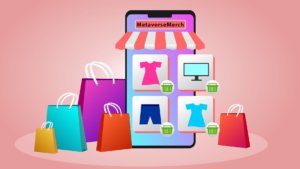DOOH vs. Metaverse: Courting Consumers
 Thanks to the pandemic, online shopping almost feels as if it has become a national pastime. However, traditional retailers are working hard to win back shoppers in the real world, and digital-out-of-home (DOOH) signage strategies are one way they are attracting attention.
Thanks to the pandemic, online shopping almost feels as if it has become a national pastime. However, traditional retailers are working hard to win back shoppers in the real world, and digital-out-of-home (DOOH) signage strategies are one way they are attracting attention.
Of course, the buying experiences are very different. Online offers the advantages of convenience and ease of research. However, the out-of-home purchase provides the instant gratification of leaving the store with purchase in hand, as well as the transaction being inherently more secure. Out-of-home also allows for better experiences for many consumer traditions, from trying on wedding gowns to buying your first baseball mitt.
Essentially, the Metaverse hosts and promotes interaction between real people online in a virtual domain. You can work from home, learn from home, buy items online, order food, and interact with others while minimizing in-person encounters. It’ll be many years before we can declare the Metaverse is a “real thing,” but it is continuing to grow.
“Web 1.0 was really about information flow, providing access to data you never had before, but it was hard to get and use. Web 2.0 added social media and interaction.” recalled Ted Korte, Vice President of Programs and Innovation Lab, USSI Global. “The Metaverse is a more immersive environment – which has the promise of doing everything humans do in real life but on the internet. Think about the online shopping experience as it is today – then imagine what it would be like to actually browse store isles like you do in real life, picking up products and placing them in your basket. I think it will evolve to be a pretty impressive online gaming experience, but it’s hard to say how far it will actually go.”
As you might expect, the evolution of the Metaverse accelerated during the pandemic. Technology is evolving to create and support the expanding Metaverse, which is built around cloud computing and high-speed, low-latency internet access. “It’s like CPU and memory on your computer – you can never have enough,” Korte said.
However, consumers are still hesitant to embrace the full Metaverse experience. According to Caddle, an app-based data insights platform that provides incentives to participants to answer surveys and provide feedback on consumer goods and services, Virtual Reality (VR) still has an uphill climb for commercial acceptance. A recent survey showed more than 72% of Millennials and 61% of Generation Zers are unlikely to purchase VR headsets.
In contrast, DOOH is firmly entrenched in the real world, and has been around for a while. In fact, USSI Global has been supporting digital signage efforts for decades. Historically, it’s focused on marketing and advertising – first with static signs and then with a digital loop of information. DOOH is there to serve the people who want to get out of the house for commerce, events, and travel. It has become a critical part of their “out-of-home” experience.
Now, DOOH is evolving to be something much more engaging, supported by display tools like transparent OLED screens that can transform any glass window or door into digital signage, sophisticated audience analysis tools and real-time edge computing. DOOH kiosks will interact with a personal phone to work in conjunction with the online experience. “The cost is going down – and the importance to any brick-and-mortar business is going up,” Korte explained.
These advances in technology can create unique experiences, not just provide information. For example, Korte recalled an ad in a subway system where a woman on the screen was talking about hair products. When a train passed through the station, her hair blew in the “breeze” generated from the train in the real world. “That type of ad really catches the eye,” he said. “It’s hard to do that online.”
USSI Global recently partnered with Sinclair Broadcast Group to offer the nation’s first commercial datacasting service using the NextGen Broadcast standard (also known as ATSC 3.0), which will deliver local content and advertising to USSI Global’s new network of EV charger stations. Equipped with DOOH signage technology, the EV charger stations will provide a multi-tenant platform for customized advertising and content. Korte said the first trials will begin later this year in the West Palm Beach-Ft. Pierce market (one of the top 40 markets in the country, according to Nielsen).
“Consumers want a unique experience,” Korte added. “They want the brand to tell a story they can connect with personally. They want to be understood – but not stalked – by advertisers.”
Creating content and keeping it fresh is the hardest part of the process, but Korte said working with local broadcasters will make it easier to update content several times a day, as well as geo-target content and advertising to anyone out-and-about. For example, early morning commuters may see promotions for coffee and donuts from a nearby convenience store with their weather report, while evening commuters may see offers for takeout dinner options from local restaurants between traffic alerts. “What we put on display will be truly unique with a mix of informational and educational content in addition to the promotional, with the intent to create an inviting experience for people,” Korte added.

